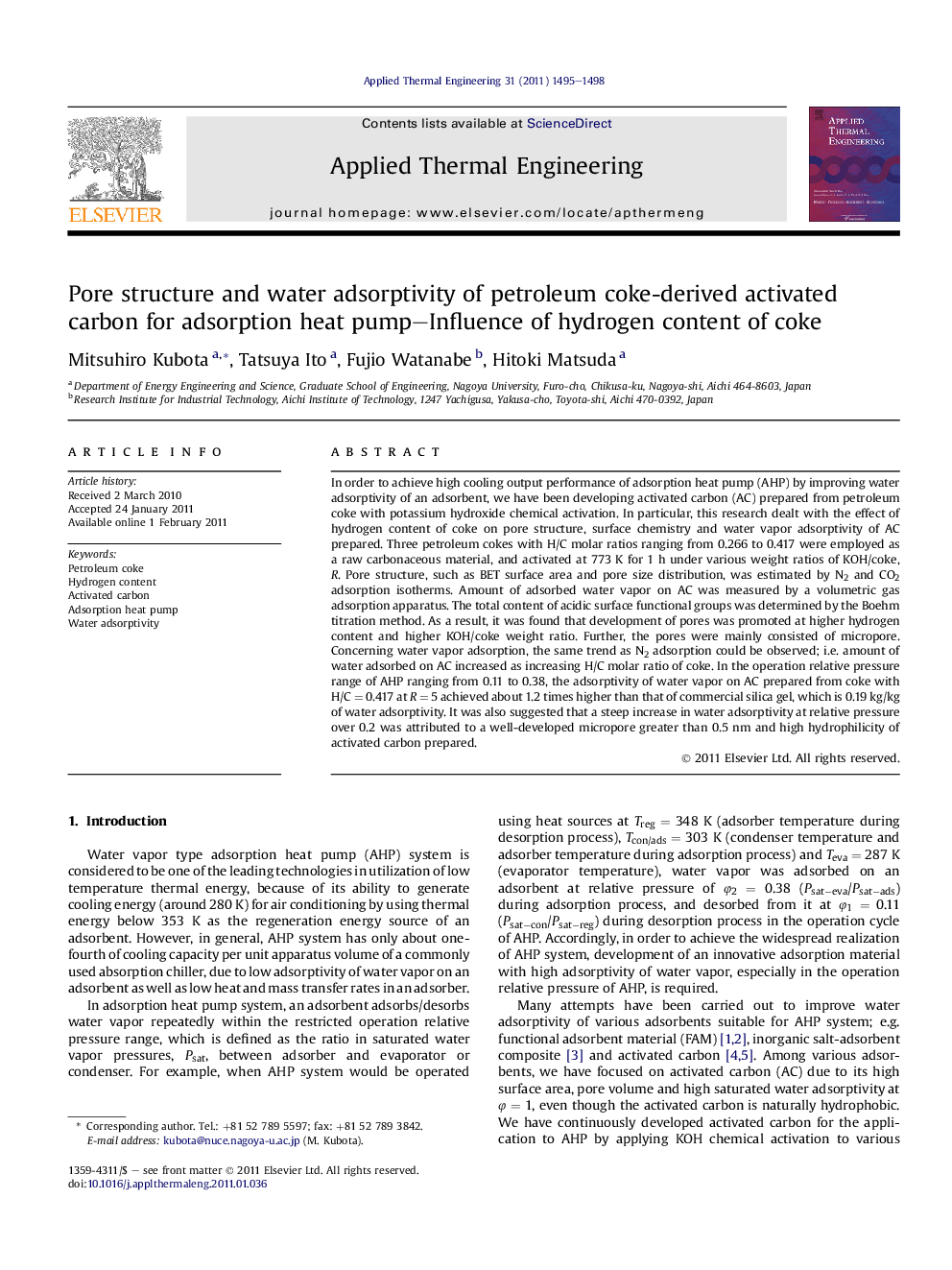| Article ID | Journal | Published Year | Pages | File Type |
|---|---|---|---|---|
| 647913 | Applied Thermal Engineering | 2011 | 4 Pages |
In order to achieve high cooling output performance of adsorption heat pump (AHP) by improving water adsorptivity of an adsorbent, we have been developing activated carbon (AC) prepared from petroleum coke with potassium hydroxide chemical activation. In particular, this research dealt with the effect of hydrogen content of coke on pore structure, surface chemistry and water vapor adsorptivity of AC prepared. Three petroleum cokes with H/C molar ratios ranging from 0.266 to 0.417 were employed as a raw carbonaceous material, and activated at 773 K for 1 h under various weight ratios of KOH/coke, R. Pore structure, such as BET surface area and pore size distribution, was estimated by N2 and CO2 adsorption isotherms. Amount of adsorbed water vapor on AC was measured by a volumetric gas adsorption apparatus. The total content of acidic surface functional groups was determined by the Boehm titration method. As a result, it was found that development of pores was promoted at higher hydrogen content and higher KOH/coke weight ratio. Further, the pores were mainly consisted of micropore. Concerning water vapor adsorption, the same trend as N2 adsorption could be observed; i.e. amount of water adsorbed on AC increased as increasing H/C molar ratio of coke. In the operation relative pressure range of AHP ranging from 0.11 to 0.38, the adsorptivity of water vapor on AC prepared from coke with H/C = 0.417 at R = 5 achieved about 1.2 times higher than that of commercial silica gel, which is 0.19 kg/kg of water adsorptivity. It was also suggested that a steep increase in water adsorptivity at relative pressure over 0.2 was attributed to a well-developed micropore greater than 0.5 nm and high hydrophilicity of activated carbon prepared.
Research highlights► Hydrogen content of petroleum coke was focused in preparation of activated carbon. ► Pore structure of activated carbon increased with hydrogen content of coke. ► Water adsorptivity at low relative pressures increased with amount of hydrogen. ► Activated carbon had 1.2 times higher water adsorptivity than silica gel. ► Pores larger than 0.5 nm and high hydrophilicity are important for water adsorption.
